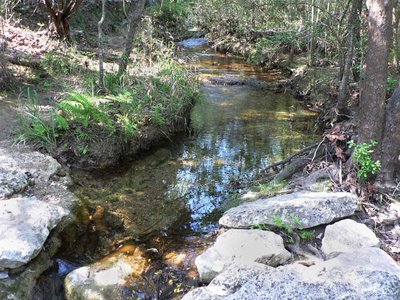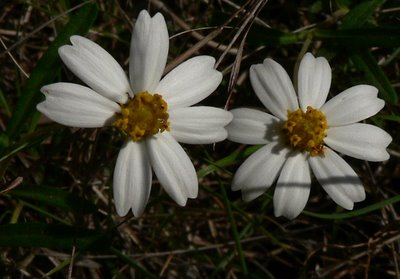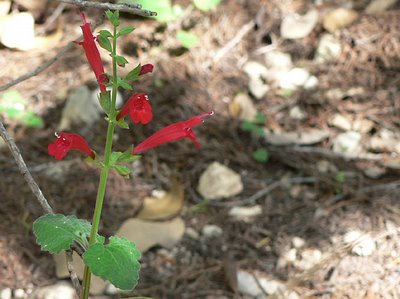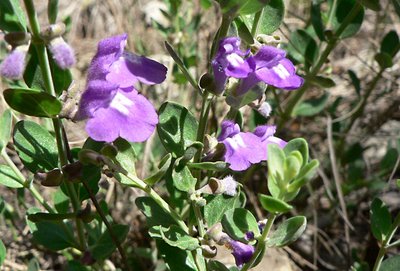When I first went there, in the early 1970s, Texas madrones grew along the trail above the creek. I thought perhaps I might revisit them. Alas, human presence seems to have eliminated them altogether. Maybe there was a fire. At any rate the preserve has a "Madrone Trail" where now no madrones remain, except in the memory of those of us who once saw them.
But that nostalgia aside, it was a very beautiful day, and there are lots of flowers out. I enjoyed the walk. Here are some photos.
This is the little creek, above a small and lovely waterfall.

Blackfoot daisies (Melampodium leucanthum), hardy and able to withstand heat and dry weather, are common in the upland part of the preserve.

Cedar sage (Salvia roemeriana), found occasionally in shaded areas.

A question mark comma (Polygonia interrogationis) pretending to be a leaf under oak trees

A Drummond's skullcap (Scutellaria drummondii.) I only saw one of these.

Texas sages (Salvia texana) were a little more common than the skullcaps

Navajo tea (Thelesperma simplicifolium) is another dry upland flower.

Here a western scrub jay (Aphelocoma californica) bids me goodbye and (with the attitude of most jays) good riddance. The western edge of Austin in the farthest east this species of jay can be found. It's blue jays from Bee Creek all the way to the Atlantic Ocean.

(click to enlarge photos)
No comments:
Post a Comment